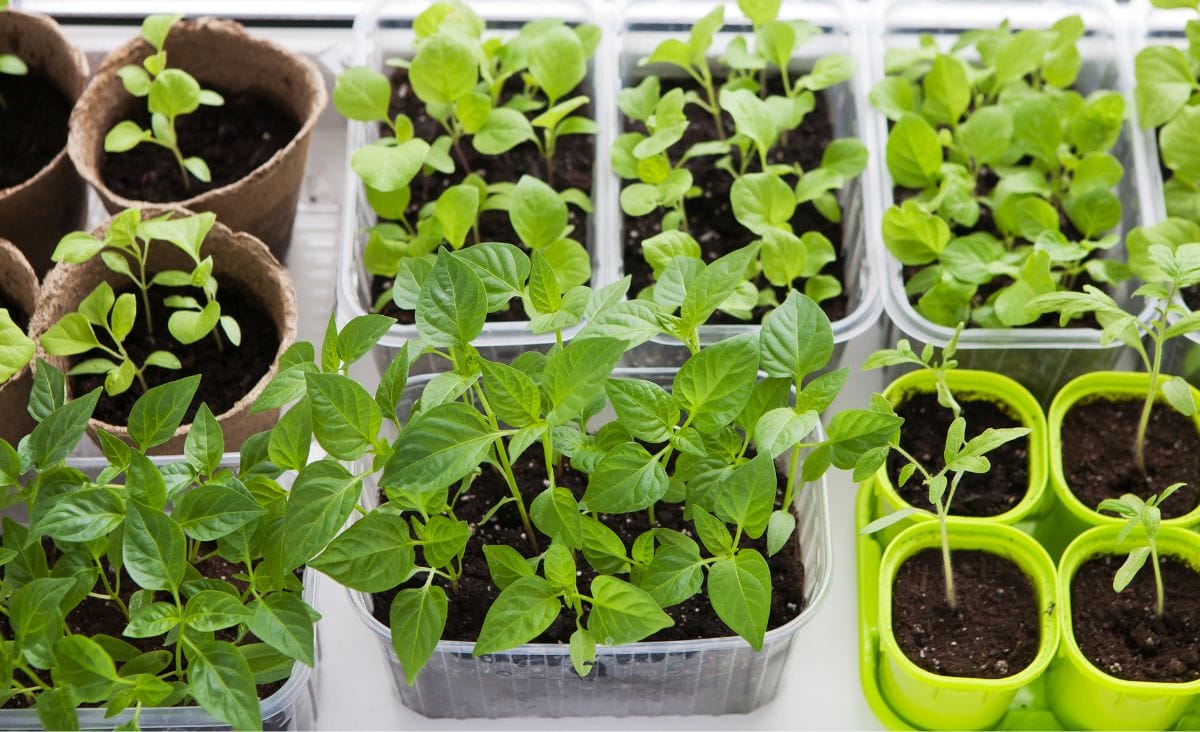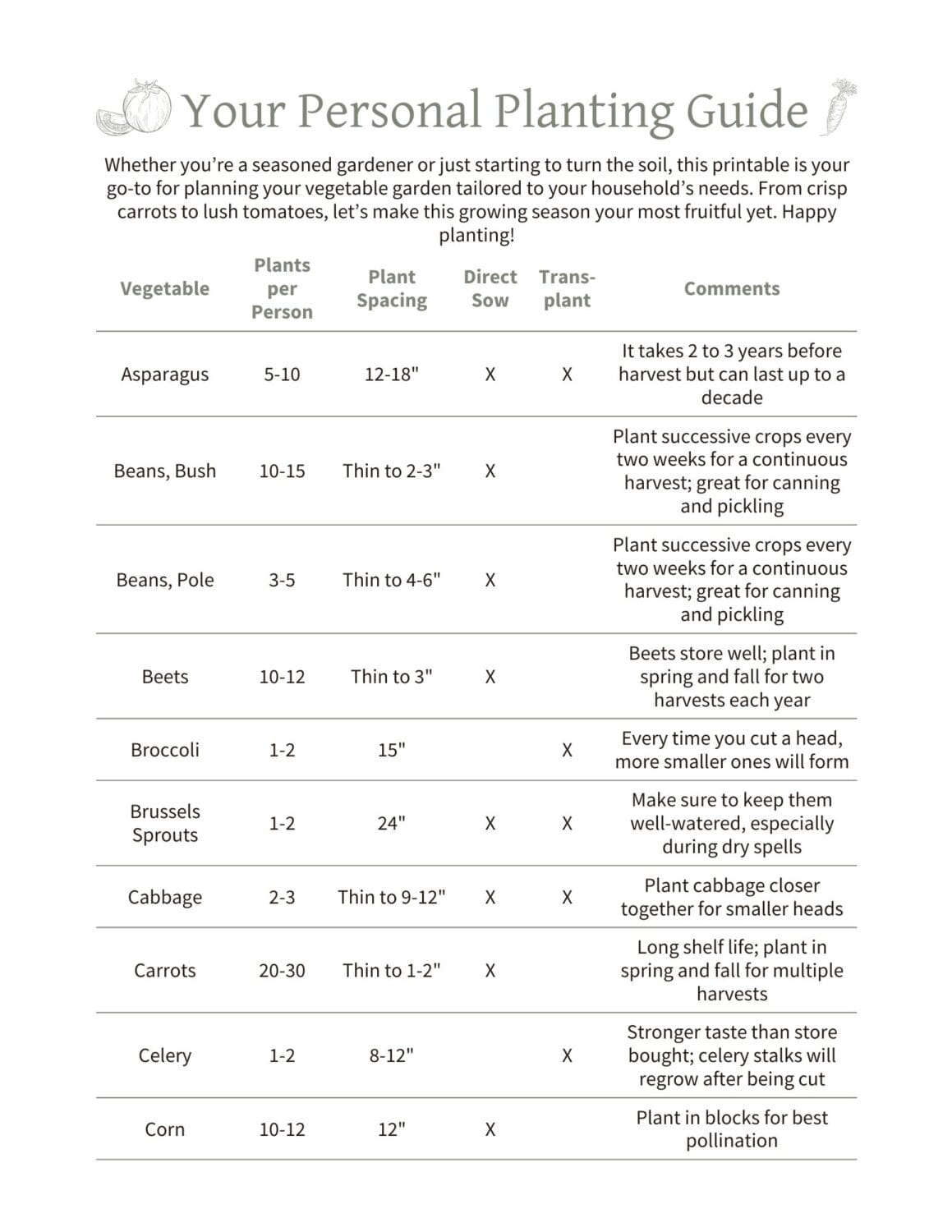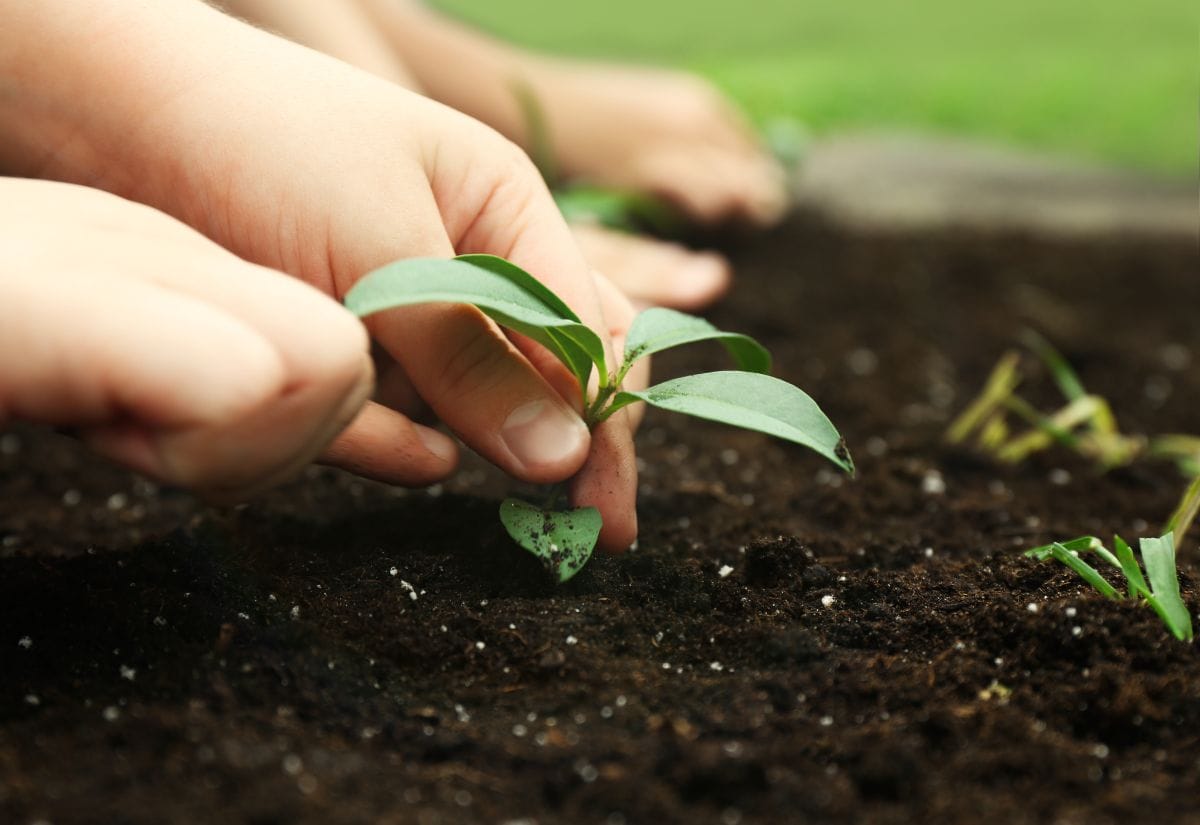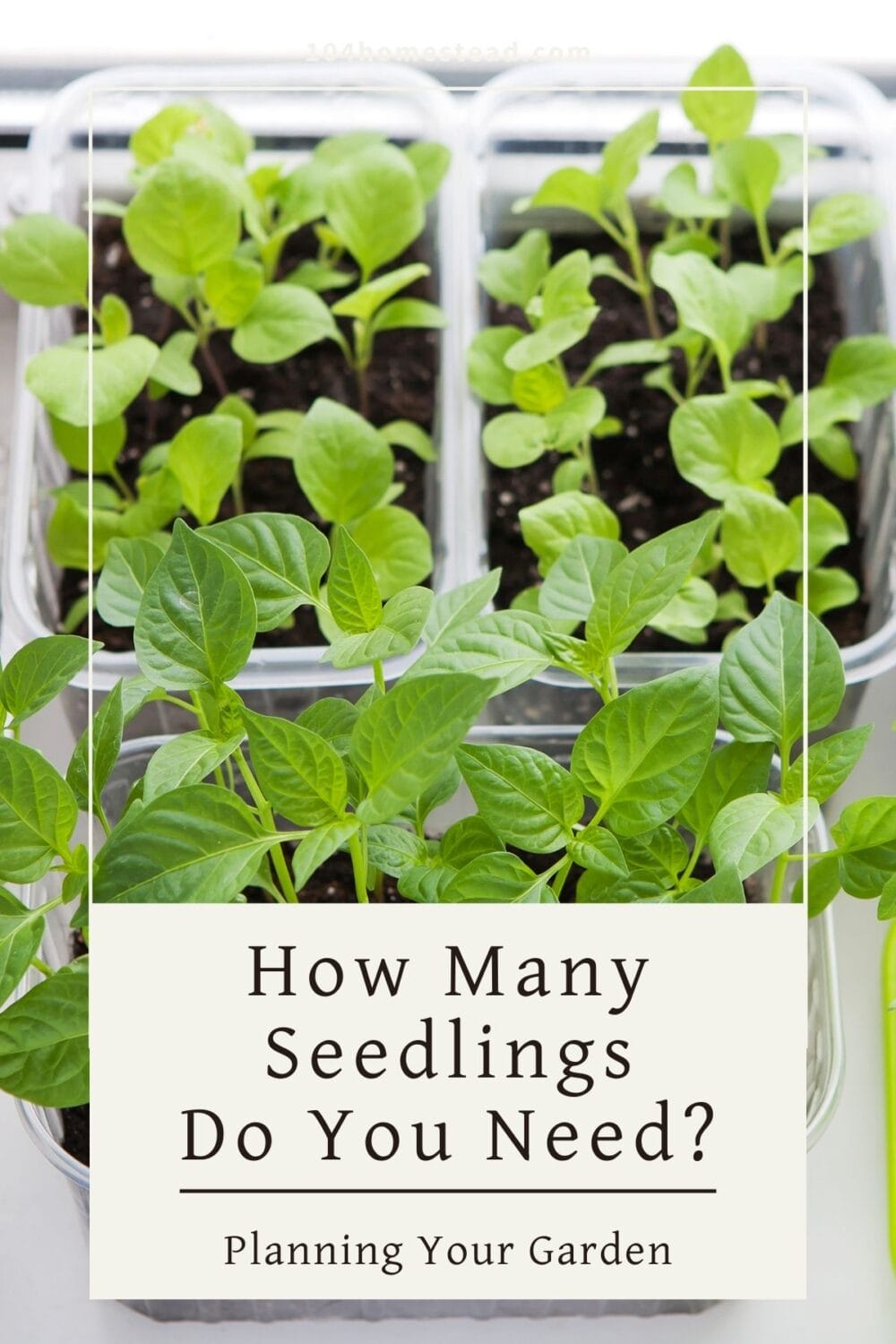How Many Seedlings You Need for a Prosperous Garden
To have a successful garden, learn how to figure out how many seedlings you need to start. Get all the tips you need here.

Starting your garden from seedlings is an exciting adventure that lets you see the amazing process of life at its very start. However, one of the most common questions gardeners face is, “How many seedlings do I need to start for my garden?”
This depends on a number of things, such as the size of your garden, the plants you are growing, and how much food you need. Let’s dive into the details to help you plan your garden effectively.
Assessing Your Garden Space
It is important to measure your garden space before you start your seeds.
Understanding Square Foot Gardening
When you use square foot gardening, you divide your garden into small squares, usually 1 foot by 1 foot, so that the plants can grow better and you waste less water and time pulling weeds. It is easy to figure out how many seedlings can be started and grown in each square with this method, which makes good use of space and resources.
Traditional Row Gardening Space Requirements
In traditional row gardening, plants are put in straight lines with a certain amount of space between each row and plant to meet the needs of each crop for best growth. For this method to work, you need to know how much space each type of flower or vegetable needs so you can figure out how many seedlings you can fit, giving them enough room to grow and easy access for maintenance.
Knowing Your Plants
Beyond just looking good, picking the right plants for your garden means knowing how they grow, how much food they can produce, and how much space they need. This information will help you figure out how many seedlings you need to reach your garden goals.
High Yield vs. Low Yield Varieties
High-yield varieties of plants are specifically bred or selected for their ability to produce more food from each plant, making them ideal for gardeners looking to grow more food in a small area. In the course of the season, a single plant of these varieties can produce a lot of food, which is especially helpful for crops like tomatoes, cucumbers, and peppers.
Tip: Consult with local gardeners or agricultural extensions for specific advice on plant varieties and their performance in your area.
Succession Planting and Seasonal Considerations
To get more out of your garden during the growing season, you need to think about succession planting and the seasons. Spreading out the planting of seedlings over time will give you a steady supply of fresh vegetables instead of a big harvest all at once. This works especially well for crops that grow quickly, like lettuce, radishes, and spinach, so you can harvest them more than once.
Check out my post on succession planting for more information on how to get the most out of your garden by harvesting repeatedly. It has all the information you need to keep your garden producing all season.
In addition, knowing when different plants grow lets you plan your planting for cool-season crops like kale and peas in the spring and fall and warm-season crops like tomatoes and cucumbers in the summer. You can get the most out of your garden space and enjoy its fruits and vegetables for longer by planning your garden with this strategy in mind.
Consumption and Preservation Goals
The production from your garden should match your family’s goals for food storage and consumption. How many seedlings you start will depend on how much you plan to eat right away and how much you want to store for later.

Fresh Consumption Needs
Before you decide how many seedlings to start, you should think about how much fresh food your family eats. Think about what fruits and vegetables you and your family eat often and in large amounts. If you like salads every day, you might need a steady supply of lettuce, cucumbers, and tomatoes, which means you will need to plant more of these seedlings.
Also, think about when each plant grows and when it is ready to be picked to make sure you have a steady supply of fresh food throughout the growing season. You can change the number of seedlings you plant based on how much you eat.
Preserving for Future Use
Think about both what you will eat right away and what you would like to preserve when you are planning your garden. Freezing, canning, drying, or fermenting are some ways to preserve your harvest and make sure you have home-grown food all year long. Think about which vegetables and fruits are best suited to your preferred preservation methods, and plan your seedling counts accordingly.
For example, if you like to make tomato sauce, pickles, or dried herbs, you should grow more seedlings of those plants to make sure you have enough fresh food and extra to preserve.
Seedling Survival Rate
Thinking about the survival rate is important for accurate garden planning because not all of the seedlings you plant will make it to harvest. Knowing this will help you choose the right number of seedlings to plant in order to have a successful and fruitful garden.
Accounting for Loss
It is important to think about what you might lose when you plan your garden and transplant seedlings. From seeds that do not germinate to seedlings that die from disease, pests, or environmental stressors, loss can happen at different stages of a plant’s early life. Consider starting 10–20% more seedlings than you want to end up with in the garden to make sure it is full. This buffer lets you pick the healthiest plants to move and makes up for the ones that do not make it.
Sharing Your Extra Seedlings
A common problem for gardeners is what to do with extra seedlings. Luckily, there are a number of good options. Giving extra seedlings to community gardens, friends, or family not only spreads the joy of gardening, but it also supports local food security and biodiversity, which makes community bonds stronger.

Donating to schools or educational programs can help educate the next generation about the importance of gardening and sustainable living. Organizing or taking part in a seedling swap is a great way to get new plants for your garden and learn from other gardeners. If you have a lot of extra seedlings, you can sell them at farmers’ markets or garden clubs in your area to get some of your money back. If you have seedlings that are not healthy enough to share, you could add them to your compost pile to make the soil in your garden better.
If you get permission, you can also plant extra seedlings in public places like parks, schools, or retirement homes to give more people access to fresh food.
Vegetable Garden Planning
What makes a vegetable garden successful is not just how many seedlings are started, but also how they are cared for during the growing season. Here’s how to approach your vegetable garden planning:
- Check Out the Garden Space: Find out how many beds you can fit in your garden by measuring the space you have available. This will have a direct effect on how many seedlings you can start.
- Pick Your Crops: Choose the vegetables you want to grow by thinking about what your family eats and whether the plants will do well in your area. Some crops, like tomatoes, cucumbers, and leafy greens, can grow in small spaces and still produce a lot of food.
- Calculate Seedlings per Vegetable:
- For high-yield vegetables, you may need fewer plants. For example, one or two tomato plants can supply a small family.
- For root vegetables like carrots and beets, you do not need to start seedlings indoors; you can just plant them directly in the ground.
- More seedlings are needed for a continuous harvest of leafy greens like lettuce and spinach, but each plant needs less space.
- Succession Planting: To prepare for succession planting, start seedlings at regular intervals. Because of this, vegetables that do not produce throughout the season, like lettuce, radishes, and cilantro, can be picked all the time.
- Companion Planting: To improve plant health and yield, use companion planting in your design. For example, planting basil near tomatoes can make them taste better and keep pests away, which could mean that fewer seedlings are lost to pests.
- Spacing and Depth: For spacing and depth, read the directions on the seed packet carefully. Too much planting can make it hard for air and light to get to the plants, which can hurt their health and yield.
- Think About Vertical Gardening: If you want to save space and grow more seedlings in a smaller space, think about vertical gardening for plants that grow on vines, like cucumbers and peas. I have loads of low cost and no cost trellis ideas for you to check out.
By thinking about these things, you can make a vegetable garden plan that makes the best use of your space, fits your dietary needs, and tells you exactly how many seedlings you need for a bumper crop.
Frequently Asked Seed Starting Questions
Before you start your garden from seedlings, there are a few important things you can do that will make it much easier and more successful. If you want to grow plants longer or get a head start in colder places, my guide on winter sowing will help you learn how to start seeds outside, even when it is cold outside.
It is very important that your seedlings do not get too shocked when they move outside. My hardening off and transplanting guide shows you how to do this safely.
Did you know that SNAP benefits can be used to buy seeds? This is great for gardeners who want to make the most of their money. Find out how to use food stamps to buy seeds so you can grow your own food and save money at the same time.
Last but not least, if you want to keep growing your favorite varieties year after year, check out my encyclopedia of seed saving. It has printable seed packets to help you do this.
If you’ve found value in this blog post and enjoyed reading it, why not share it with your Pinterest community? Pin the image below and spread the love!

To choose how many seedlings to plant in your garden, you need to carefully plan and think about the space you have, the plants you want to grow, and how much food you want to eat or store. By thinking about these things, you can make sure that your garden is both productive and easy to care for.
How do you plan the number of seedlings for your garden? Share your tips and experiences in the comments below!

